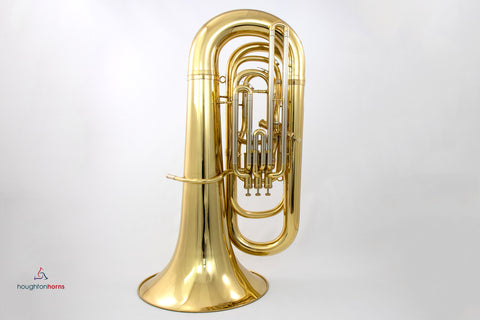Is your brass instrument conical or cylindrical? Read below to find out and why it matters!

A conical bore instrument is one in which the bore diameter gradually increases throughout the length of the tubing. Think of the shape of a cone:

A cylindrical bore instrument is one in which the bore diameter remains essentially consistent throughout the length of the tubing. Think of the shape of a cylinder:
Here are some examples of conical bore instruments: cornet, flugelhorn, French horn, euphonium, and tuba.





And here are some examples of cylindrical bore instruments: trumpet, trombone, and baritone



A conical bore instrument typically produces a softer, warmer sound, while a cylindrical bore instrument typically produces a more focused, direct sound.

Why does any of this matter? Why should I care?
When we play our instruments, we listen to the intonation and general sound we are creating, but we also listen to the harmonics that ring most prominently. Advanced musicians are capable of bringing out lower harmonics if they desire a more veiled sound, and higher harmonics if they want a brighter sound. This manipulation of acoustics can create different timbres for individual players, but there are limits and natural tendencies for the different types of brass instruments.


Have you ever had someone tell you that your sound is too “dark”, or too “bright”? While the sonic descriptors “dark” and “bright” may take on different meanings to different people, these terms typically refer to the number of lower frequency harmonics versus higher frequency harmonics in a given tone. Bore shape–or, more accurately, bore gradient–plays into this. The consistent gradient in a conical bore instrument reinforces overlapping harmonics, but does not cause as much interference. This results in a wider array of more, but less powerful sound waves (ie: a “dark” sound). Cylindrical bores, which maintain the same shape until after the sound waves have almost completely propagated, tend to have much more interference. Therefore, the higher frequency harmonics are reinforced while the lower frequency harmonics are weakened (ie: a “bright” sound).
Hopefully this article has been helpful in explaining some of the physical and acoustical differences between conical and cylindrical bore brass instruments. Feel free to leave questions or comments below!

